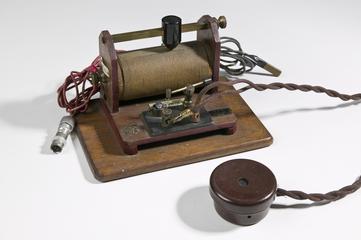
Self Cleansing carbon filter
- PART OF:
- Self Cleansing carbon filter
- Made:
- 1861 - 1900 in Manchester








Self Cleansing carbon filter, made by Elliott and Co., 88 Corporation Street, Manchester c.1861
From the mid-1700s, ceramic carbon water filters, like this one, were used to make water safer to drink. Charcoal inside the filter was designed to absorb some of the bacteria and impurities, reducing the risk of getting ill from drinking or washing in the water.
Manchester’s rapid industrial and urban growth during the 19th century created huge pressures on the town’s resources. In 1847, of the 47,000 houses in the town, only 11,000 had a piped water supply. A further 12,000 homes relied on a shared tap or standpipe in the street, while thousands more drew their water from shallow wells or streams, which were often polluted. Added to this inadequate provision, manufacturers were responsible for serious water pollution in local water courses. Manchester gained a reputation as one of the most filthy, overcrowded and unhealthy places in Britain.
Diseases linked to poor water and sanitation, like typhoid and dysentery, spread rapidly. Manchester was badly hit by outbreaks of cholera in 1832 and 1849. Those that could afford to filtered their water, one method was using a ceramic water filter container like this one. Most of Manchester’s workers did not have this luxury and were forced to drink water that could make them dangerously ill or even kill them.
Details
- Category:
- Water Supply & Sanitation
- Object Number:
- Y1993.67.1
- Materials:
- ceramic (unspecified)
- Measurements:
-
overall: 600 mm 285 mm,
- type:
- water filter




